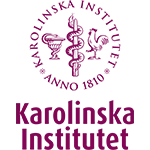Explore the credit course catalogue
75 Results
This course aims to equip students with a broad understanding of digital health, emphasizing not only technical skills but also ethical considerations and critical thinking when designing, developing, and implementing digital tools in healthcare settings. The main objective is to set the stage for digital health, in general, and to understand the impact of design, development, and use of digital tools within healthcare settings for optimization purposes, in particular. By the end of the course, the students will be able to illustrate introductory knowledge of digital health, encompassing design, development, and utilization of digital tools in healthcare settings, as demonstrated by their assignment, where the focus is to design a mobile application for a specific case as well as reflect on the ethical implications of working with artificial intelligence as an embedded part of healthcare.
The course instructor is Dr. Anna Sigridur Islind, a professor at the department of computer science at Reykjavik University.
To register, contact: islind@ru.is

In the workshop “Fit for AI - Prompting for advanced users” you can get to know and try out prompting tips and techniques. You will learn about prompting techniques such as Few Shot Prompting, Chain-of-Thought Prompting and others. You can try out these techniques directly on various tasks and your own examples.

This course takes you on a journey into the exploration of how the brain shapes and enables our social and affective behaviors. We will examine key questions, such as how we learn from each other, when and in what ways social norms influence us, and how our communication and social decision-making unfold.

The course covers the theoretical background to the brain imaging methods sMRI, fMRI, PET, EEG and MEG, such as what aspects of the human brain's structure and function they register, and the operation principles of the imaging instruments. The coursed gives the student a good understanding in how the different methods are used within in academic research as well as within health care. The course also addresses how the imaging methods can be combined in multimodal analyses, and discusses the interplay between development of theory, instrumentation, method, and applications.
The course begins with an introduction to brain imaging methods within neuroscience. In separate course modules, the course then offers the student a deeper understanding of the different methods sMRI, fMRI, PET, EEG and MEG, as well as combining them in multimodal brain imaging. Finally, the students will deepen their knowledge on a topic of their choice in an individual study project.

This course aims to introduce students to health care organization and management, and how this affects public health. There is a special focus on the opportunities offered by digitization and how these can be utilized in quality and improvement work.

The purpose of the course is to introduce the topic of artificial intelligence (AI) in mental healthcare focused on theoretical development, ethics and practical application informed by a scientific approach.

This course will elevate your AI proficiency, preparing you to actively engage in the digital evolution of healthcare. It offers a comprehensive perspective on the healthcare shift, steered by medical necessities, and bolstered by innovative artificial intelligence solutions.

This course provides students with in-depth knowledge in the field of digital health from an entrepreneurship perspective. Domains of digital health, needs-based innovation including prototyping, usability and testing as well as data management, intellectual property, reimbursement, business models, ethics and future trends will be discussed and analyzed.

Topics covered include:
- Basics of monolayer glioblastoma cell culturing
- Generation and culturing of human glioblastoma organoids
- Immunochemistry, Western Blot, DNA/RNA isolation
- Flow cytometry analysis of cell death and cell viability assays
- Live-cell imaging and morphology analysis
- Data analysis including statistics using ImageJ, FlowJo, GraphPad PRISM
- Visualization of results using Microsoft Excel/Powerpoint or Adobe illustrator

Topics covered include:
- Hearing and speech perception and associated disorders (e.g., hearing loss, deafness, tinnitus)
- Vestibular function and associated disorders
- Objective electrophysiological measures: auditory and/or vestibular evoked responses (ECochG, BERA, ASSR, CERA, VEMP)
- Behavioural experiments (psychoacoustics)
- Principles of hearing rehabilitation with neural prostheses, i.e., cochlear implants
- Research methods in audiology/auditory neuroscience
- Application of methodology (in patients, if possible)
- How to design and conduct research projects

Topics covered include:
- Computational design strategies
- Differential equations
- Programming in Python
- Data analysis

Topics covered include:
- Experimental design strategies
- Fluorescent immuno-histochemistry
- Confocal Microscopy
- Intra-vital Microscopy (e.g. two-photon, three-photon, 2P-STED, ...)
- Data analysis
- Behaviour

Topics coverd include:
- Vascular Biology and organotypic properties
- How to investigate blood vessels in the CNS
- Isolation of blood vessels and endothelial cells from the mouse CNS
- Endothelial cell tube formation assay
- Co-culture of endothelial cells and pericytes in 3D
- In vitro blood brain barrier assay

Topics covered include:
- Tissue isolation and cryosectioning
- Immunofluorescent staining/Western blots
- Tissue isolation and cryosectioning
- Imaging (e.g. Confocal microscopy, Slide scanner etc.)
- (Semi-) automated image anaylsis (e.g. Fiji, machine learning based analysis)

Topics covered include:
- Coding: basic concepts, practical training, testing
- Foundations of sensor technologies
- Foundations of Bluetooth communication
- Usage of advanced programming interfaces (APIs)
- Analysis of time series data
- Introduction to machine learning techniques

Topics covered include:
- CRISPR/Cas9 mediated genome editing in mammalian cell lines
- CRISPRoff genome editing tools to modify activity of gene promoters
- Cloning of promoter regions and relevant proteins into reporter gene and mammalian expression vectors
- Reporter gene assays to measure activity of gene promoters or unknown DNA sequences using plate luminometer
- Chemical modification of genomic DNA for DNA methylation analysis
- Pyrosequencing for detection and quantification of DNA methylation
- Chromatin preparation and chromatin immunoprecipitation analysis
- Standard PCR and quantitative reverse transcription PCR analysis
- Transfection and expression of relevant proteins in mammalian cells
- Western blotting for protein analysis

Topics covered include:
- rAAV-guided engram labeling techniques (Cal-Light, SomCal-Light, FLARE)
- Tissue engineering (FluoClearBABB, ExM)
- Large-field superresolution microscopy
- AI-guided behavioral classification
- Multifactorial behavioral classification

Topics covered include:
- Coding: theory, practical training, coding styles, unit testing
- Collaborative software development workflows
- Data analytics workflows
- (Generalised) linear mixed effects models
- Bayesian statistics
- Data visualisation
- Workflow automation
- Meta-science

Topics covered include:
- Deep brain imaging using single- and two-photon imaging techniques
- Miniature microscope recordings in freely moving animals
- Combined all-optical imaging and optogenetic tools
- Large scale neural population analysis using data science and machine learning techniques
- Behavioural phenotyping using markerless pose estimation
- Scientific programming using Python

Topics covered include:
- Histological preparation of rodent sensory organs
- Immunohistochemistry on mole-rat and mouse neuronal tissues
- 3D histology using tissue clearing
- Fluorescence microscopy, Light sheet microscopy
- Behavioural assessment of magnetic orientation under controlled conditions

Topics covered include:
- Cellular resolution fluorescent in vivo imaging (mouse model)
- Histological analysis of post-encephalitic brain tissue changes
- Field electrophysiology (in vivo, in vitro)
- Patch-clamp cellular recordings (in vitro)
- Targeted light-based circuit interference, light-activated antiepileptic drugs

This module is dedicated to understanding and investigating how small molecular modulators can be used to specifically target prominent metabolic pathways using the mouse as an experimental animal model. Attendees will be introduced to murine animal handling, murine primary adipocyte isolation and in vivo, ex vivo and in vitro pharmacological experimentation with the model system. The practical work will be supported by institute seminars covering, among other, signal transduction metabolism and pharmacology.

Topics covered include:
- Assessment of memory and imagination in patients with neurodegenerative dementias and related to aphantasia
- Rating of patients’ memory reports
- Analysis of patient data
- Writing summary reports

The lab-based practical part of the course will cover methods used to tackle questions in the research area outlined above, such as cell culture, microscopy, tissue dissociation and processing of tissue samples, MACS and FACS-based cell analysis and separation, cell transfection, cell genome engineering, transgene expression, cellular
assays, protein and gene expression analyses etc. In addition to the practical part, students will attend lectures and seminars.

Topics covered include:
- animal models to study epileptogenesis
- *omics analyses of human epileptic specimen
- Screening analyses for classical auto-antibodies and new candidates inpatients suspicious for limbic encephalitis
- Analyzing the functional role of patient-derived auto-antibodies in epilepsy in vitro und in vivo
- Analyzing synchronous network activity in vitro (multi electrode array; MEA)
- CrispR-Cas systems to interfere with epileptogenesis
- Generation of animal models to study limbic encephalitis
- Neuropathology in experimental LE

Topics covered include:
- Basic protein-biochemical methods (protein-protein interactions, Western Blotting
- Processing of human samples for protein detection
- Basic cloning techniques and CRISPR
- Cell culture work with primary cells and cell lines

Topics covered include:
- Diversity of neuronal cell types and approaches to cell type classification
- Experimental design to dissect the functional contribution of diverse neuronal cell types to behaviour
- Stereotaxic surgeries and cell type-specific targeting with viral vectors in transgenic mice
- Deep-brain imaging at the single-cell level using miniature microscopes in freely-moving mice and 2-photon recordings in head-fixed animals
- All-optical interrogation of neural circuits with combined imaging and optogenetic approaches
- Introduction to analysis of deep-brain imaging data

Topics covered include:
- Hypothesis driven planning and design of experiments for research project
- Cloning, colony cracking and transfection
- Cell culture and life cell imaging
- Imaging and data analysis
- Application of techniques depend on individual working plan

Topics covered include:
- How to design, code (C#, Unity) and conduct virtual reality experiments
- How to record, time-sync and real-time access physiological data streams during virtual reality experiments (based on LabStreamingLayer)
- How to analyse psychophysiological data (e.g.: wireless EEG, EMG, EDA, HRV or Eyetracking), using common Matlab-packages such as EEGLAB or LEDALAB

Topics include:
- Free swimming and restrained behavioural recording
- Multiphoton neuronal population imaging
- 3D electron microscopy preparation and collection
- Time series analysis and machine learning-based image segmentation


